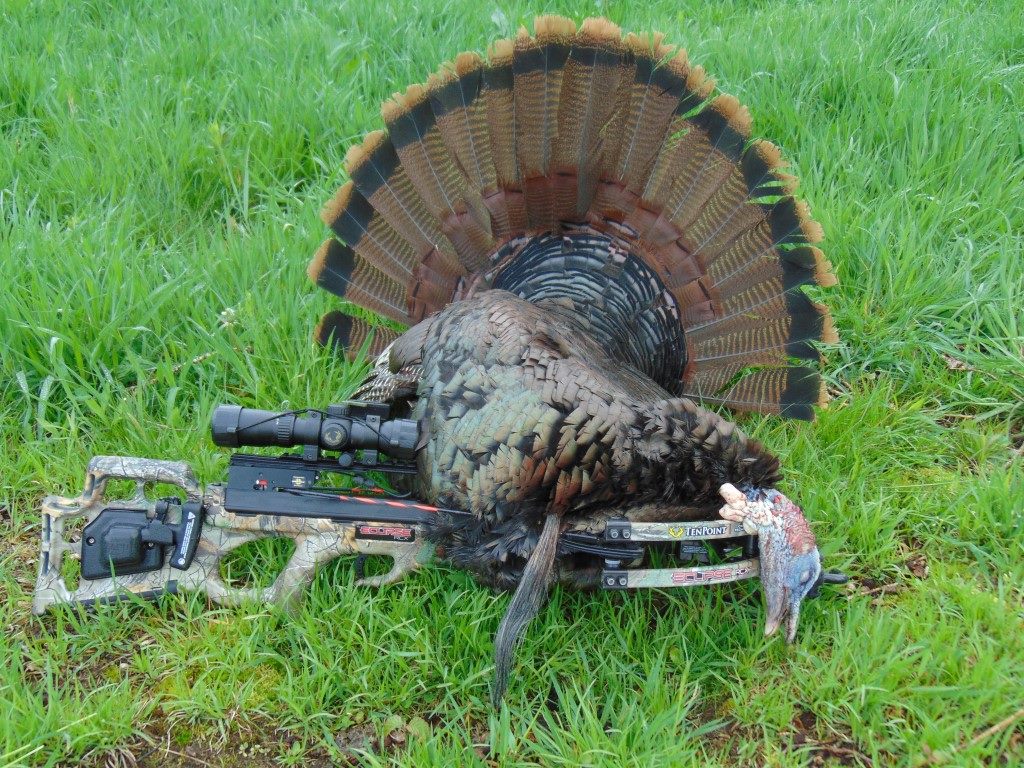Tips and Tricks for Calling Spring Turkeys
/ March 20th, 2018 The early signs of spring are finally starting to appear in most locations around the country, and, for many hunters, the onset of spring means that turkey hunting season is just around the corner. For those of you who will soon be in the woods in search of a “long beard,” here are some tips for locating and calling this cunning and elusive bird.
The early signs of spring are finally starting to appear in most locations around the country, and, for many hunters, the onset of spring means that turkey hunting season is just around the corner. For those of you who will soon be in the woods in search of a “long beard,” here are some tips for locating and calling this cunning and elusive bird.Pre-season scouting for turkeys in your hunting area can pay great dividends when the season comes. Take a walk around the area that you plan to hunt, and look for tracks, “scratchings,” and droppings. Scratchings are a sign that turkeys have been walking through the area, pushing away leaves and debris in order to locate food sources lying underneath. The shapes of droppings can show whether the turkeys that traveled through the area were gobblers or hens. Gobbler droppings will be in the shape of a “J” and hen droppings will be more spherical shaped. You should pay close attention to areas where you find droppings and feathers underneath large trees because this may indicate that you have found a roosting location.
Once you have located an area where you know turkeys are, it’s time to start to plan how you will hunt them. Using a locator call to find a roosted gobbler on the eve of your hunt significantly increases your chances of a harvest the next morning. There are many different types of locator calls available, and you should choose calls that are native to the area where you will be hunting. Some locator calls may work better than others. Owl hoot calls, coyote calls, and turkey gobble calls are typically effective at eliciting a response in the evening. Your predawn set up location should be near the area where you heard gobblers respond the previous evening. On the morning of the hunt, owl hoot calls, crow calls, and woodpecker calls are also effective locators if you do not hear any gobblers first thing.
The typical method for hunting turkey in the springtime is to mimic the sounds that gobblers and hens use to communicate with each other during their breeding cycle. Cackles, yelps, and clucks are the most common sounds that hens use to communicate location and eagerness to breed with gobblers. The “fly-down” cackle is an excellent call to make first thing in the morning to get a gobbler’s attention and let him know that you are a hen who is ready for action. You will likely hear gobblers respond to this call immediately, and you may even hear them fly down from the roost in search of you. If you hear nothing, repeat the call one or two more times. Remember: just because a gobbler does not respond to your calling does not mean that there are no gobblers in your area or that the gobblers that are there do not hear you. Next, try some soft yelps and clucks, making sure not to overcall. If a gobbler is close to you, calling too loudly or frequently can scare him away. Once you can tell that he is responding to your calls and moving in your direction, call softly and infrequently. Forcing the bird to find you can cause him to move closer to you, yielding a closer shot.
Planning to use your crossbow for turkey hunting this spring? Consider using the SteddyEddy Crossbow Monopod System to assist you with making a steady shot in the field and to help increase your chance for a successful harvest!


